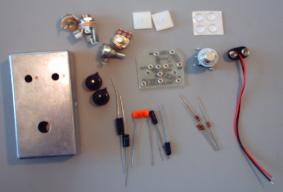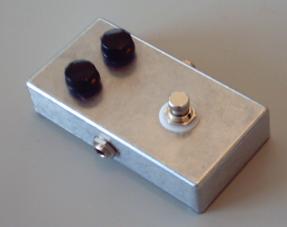

the fairly simple design of the Fuzz Face
have made it THE most popular pedal
among DIYers. Click the link for the fuzz
clone instructions to see just how easy it is
to build this legendary pedal.
Comes with everything seen here*:
*Drilled enclosure (MXR size)
*Point to point glass epoxy circuit board
*Selected NOS Philips AC125 transistors for
the germanium version or BC109C or
BC108 for the silicon version
*Xicon Capacitors
*Xicon resistors
*Neutrik 1/4" jacks
*Alpha potentiometers
*Alpha DPDT switch (true bypass)
*Black Pointer knobs
*Self-adhesive circuit board stand-offs
*Battery snap
*Self-adhesive rubber feet
*Hook-up wire (not shown)
*Online Instructions
difference is primarily in the sound of the clipping. Silicon has a little bit of a
harder edge. Silicon also has a little more gain and sustain. Germanium has a
smoother sound and can clean up much better with your guitar's volume knob.
Germanium transistors being unreliable and temperature sensitive is somewhat
of a myth. The unreliable part was probably perpetuated by the fact that most
of the transistors that were used in pedals during the 60's were not checked for
proper leakage. That's why there were so many duds. As long as they test
fine, they will last a very long time. It is also true that germanium transistors are
temperature sensitive, but not as much as some people make them out to be.
As long as you are not using germanium transistors in extreme conditions, they
are fine. You wouldn't notice the small changes in gain unless you were playing
outside at high noon during Summer, or in a drafty unheated house during the
dead of winter.


